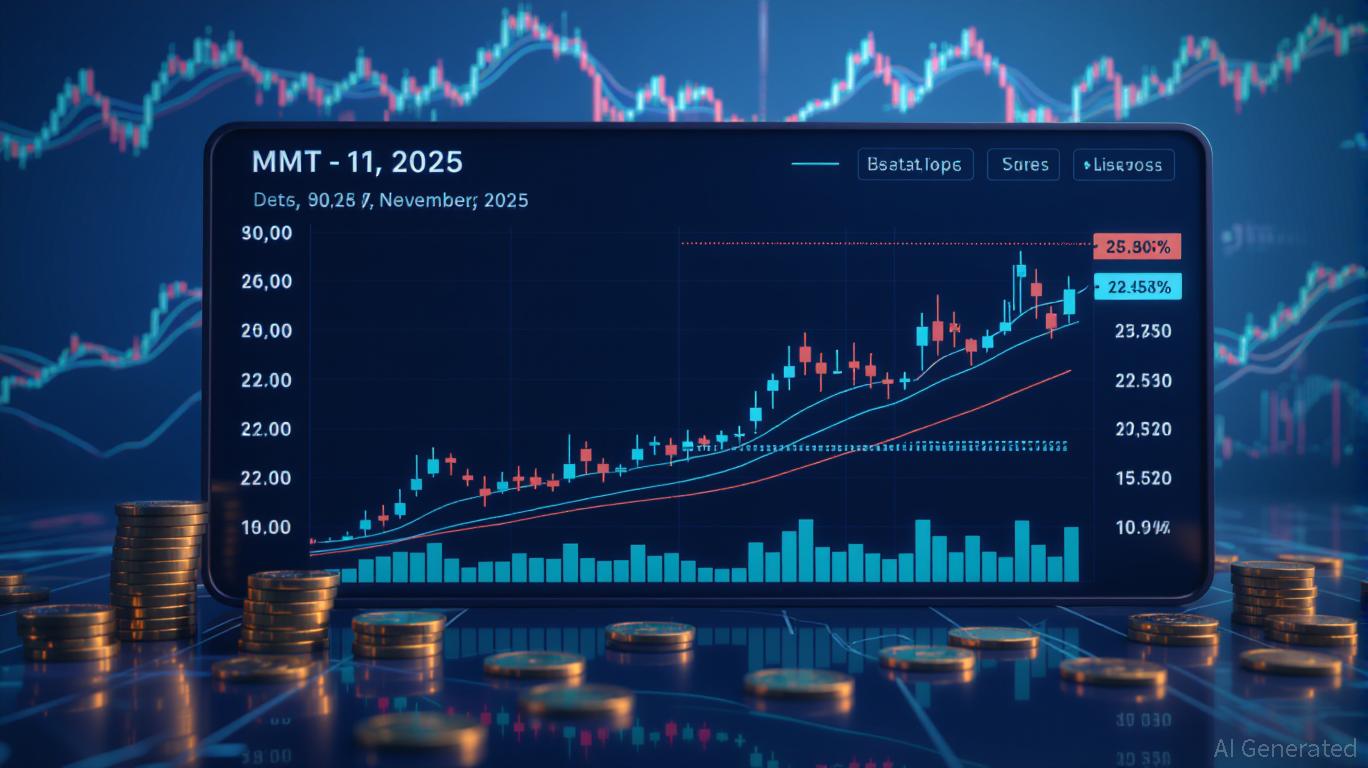Ethereum’s Fusaka Update: Enhancing Scalability While Maintaining Security
- Ethereum's Fusaka Upgrade (Dec 3, 2025) introduces PeerDAS to enhance L2 scalability via probabilistic data verification, reducing transaction costs and processing times. - Phased blob capacity expansion (6→15→21 per block) balances scalability with network stability, supported by 11 EIPs including spam resistance and gas limit adjustments. - The upgrade aims to attract developers to Ethereum's ecosystem by lowering L2 fees, while addressing revenue challenges through DeFi integration and testnet validat

Ethereum’s forthcoming Fusaka Upgrade, set to go live on December 3, 2025, represents a major milestone in the network’s ongoing efforts to improve scalability. This upgrade will introduce PeerDAS (Peer Data Availability Sampling), an innovative method that allows nodes to confirm data integrity without needing to download entire blocks, thereby improving data availability for Layer 2 (L2) solutions. By addressing a key scaling challenge, PeerDAS enables rollups and other L2 technologies to function more efficiently, leading to lower transaction fees and faster processing. The Fusaka Upgrade is a central part of Ethereum’s 2025 strategy, which focuses on foundational improvements to support the expanding needs of decentralized finance (DeFi), gaming, and asset tokenization.
One of the main features of the Fusaka Upgrade is the gradual increase in Ethereum’s blob capacity, which refers to the storage of data packets essential for rollups. The network will initially support six blobs per block, with two subsequent Blob Parameter Only (BPO) upgrades planned to raise this limit to 15 and then 21 blobs per block. This step-by-step process is designed to enhance scalability while maintaining network reliability, ensuring that the core layer can manage increased transaction loads without sacrificing security. Vitalik Buterin,
The Fusaka Upgrade encompasses 11 Ethereum Improvement Proposals (EIPs) aimed at boosting efficiency and scalability. Notably, EIP-7594 (PeerDAS) and EIP-7917 (Deterministic Proposer Lookahead) are considered key changes. EIP-7825 introduces mechanisms to resist spam and prevent network slowdowns, while EIP-7935 modifies the gas limit to support greater transaction volume. Developers have thoroughly tested these changes on testnets such as Holesky and Sepolia in October 2025, and a $2 million bug bounty program has been launched to encourage security reviews. The Ethereum community is taking a careful approach to deployment, timing the mainnet launch with the Devconnect conference in November 2025 to ensure all stakeholders are aligned.
The Fusaka Upgrade is expected to have a significant economic impact. By reducing gas fees on L2s, it is likely to draw more developers to the Ethereum ecosystem, spurring innovation in DeFi, gaming, and tokenized assets. For example, projects like
Looking forward, the Fusaka Upgrade is expected to pave the way for Ethereum to reach a theoretical throughput of 12,000 transactions per second by 2026, making it a strong contender for high-volume applications. However, the ultimate success of the upgrade will depend on effective testnet performance and ongoing refinements after launch. Developers are also preparing for future enhancements, such as potentially reducing block times to six seconds, which could further improve user experience. As the blockchain industry evolves, Ethereum’s commitment to gradual, security-focused upgrades highlights its importance as a core platform for Web3 development.
Disclaimer: The content of this article solely reflects the author's opinion and does not represent the platform in any capacity. This article is not intended to serve as a reference for making investment decisions.
You may also like
MMT Value Forecast and Investor Outlook for November 2025: Evaluating Reliability During Economic Changes
- MMT token surged 1,300% in Nov 2025 due to Binance listings, airdrops, and institutional investments. - 1607 Capital increased MMT-linked fund stake by 84.7%, but dividend sustainability remains unclear. - Fed policy and missing inflation data (due to 2025 government shutdown) cloud macroeconomic alignment. - MMT's volatility ($4.40 to $2.54) highlights speculative nature despite structural catalysts. - Long-term credibility depends on macroeconomic clarity and Fed policy shifts, not just exchange-driven

LUNA Declines by 0.62% as Ongoing Yearly Downtrend Persists in Uncertain Market Conditions
- LUNA fell 0.62% on Nov 16, 2025, continuing an 80.61% annual decline amid crypto market volatility. - The drop reflects macroeconomic pressures, regulatory scrutiny, and waning investor risk appetite in digital assets. - Technical analysis shows broken support levels and weak buying pressure, indicating a prolonged bearish phase. - Backtesting reveals sharp declines often trigger panic selling and sector-wide market erosion, compounding losses. - Prolonged depreciation risks eroding investor confidence u
The Momentum ETF (MMT) Rally: Institutional Accumulation and the Mindset Behind Small-Cap Expansion in 2025
- Momentum ETF (MMT) surged 1330% in Q3 2025 due to $10M institutional investments from Coinbase Ventures, OKX, and Jump Crypto. - Market psychology shifts toward small-cap growth as Hartford Funds forecasts 2025 small-cap earnings to outpace large-cap peers amid macroeconomic uncertainty. - MMT's $12B DEX volume and $265M TVL highlight liquidity-driven speculation, but analysts warn long-term success depends on proving real-world utility beyond short-term inflows. - Mercurity Fintech's inclusion in MSCI S

Bitcoin News Update: DeFi Faces Liquidity Challenges Amid Bitcoin Falling Under $100K
- Bitcoin's drop below $100K triggered DeFi liquidity crises, with $650M in leveraged positions liquidated as automated stop-losses activated. - Wrapped Bitcoin (WBTC) integrated with Hedera blockchain to reduce MEV and frontrunning, aiming to inject liquidity into DeFi protocols. - Hyperion DeFi reported 60% MoM validator growth and new partnerships, emphasizing staking yields over leveraged positions to avoid market volatility. - Analysts like Tom Lee predict 6-8 weeks for recovery, contingent on stabili
